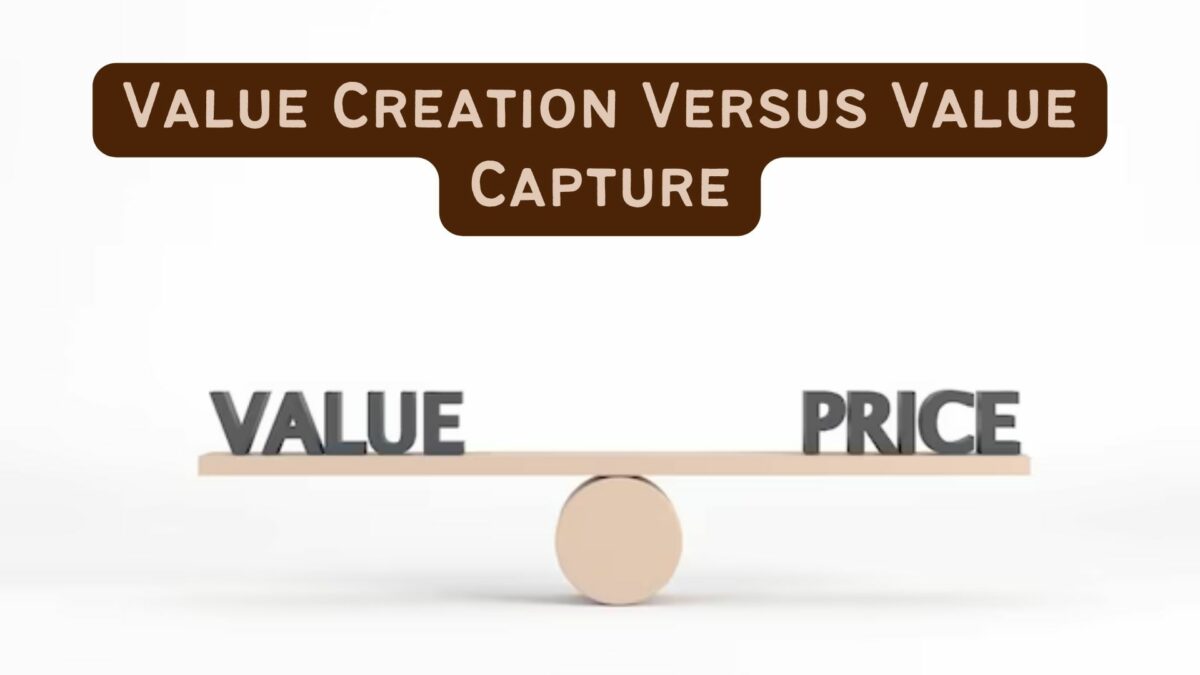“Value is more expensive than price.”
–Toba Beta
“The price of anything is the amount of life you exchange for it.”
– Henry David Thoreau

As entrepreneurs, we will not succeed unless we create value for those whom we serve.
It’s a simple exchange. Customers exchange money, and in return, we provide value.
As entrepreneurs, we have to figure out the question of pricing.
I recently had a discussion with a person with whom I occasionally discuss business strategy. I had told him about a fairly complicated model I’d built for a client and what went into the building of that custom model.
“And how much did you charge for that?” he asked.
“About $1,800,” I replied.
“If he went somewhere else, he’d probably have to pay several thousand to have that work done. You’ve probably created tens of thousands of dollars of value for that client.
“You’ve underpriced yourself,” he concluded.
I once had a boss who told me that the biggest pricing hurdle to spending was one cent. There were people who would never pay for anything on the Internet, but if they spent one cent, then they were much more likely to pay the price for whatever it was that they wanted to buy.
As an entrepreneur, you face three pricing challenges:
- Create something that people will pay for – value creation.
- Charge enough that it is worth your time and effort and that you make a profit – value capture.
- Leave the customer feeling like he did receive good value for his money – again, value creation.
How to Balance Value Creation with Value Capture
To show off my crazy picture-drawing skills, I created this little chart to illustrate the challenges that entrepreneurs face.

There are some things to note about this picture:
- You do not want to charge a price where customers perceive negative value. There are two ways to achieve this goal. The first is to charge a lower price so that you’re farther up on the customer value line. The second is to increase what the customer perceives he receives for what he pays. For example, in my line of work, I can demonstrate the impact of financial planning on a family’s net worth, and, hopefully, in doing so, demonstrate how much better off someone can be by going through the financial planning process. In my last company, we could demonstrate increased revenues by improvements in site search, tying ROI to the work.
- Your marginal cost should be less than the point at which price and perceived customer value intersect. If it’s not, then you’re risking profitability.
- How close you want to get to the maximum pricing point depends on a couple of factors. The first is how much the relationships with your customers matter. If you’re providing a commodity that you only interact once with the client, then you can price higher. If you depend on referrals or will interact multiple times with customers and receive repeat revenues with them, then you’ll want to be closer to the minimum price. There is no one-size-fits-all pricing answer.
- If you are in an industry where you can measure value created, you must obsess over measurement. It’s vital that, where possible, you measure the value that you have created. The closer that you can move value creation to an objective measurement rather than a subjective measurement, the more you can demonstrate ROI and just how much value a potential new customer will receive for the money spent. You can also demonstrate that value to customers who have received that value so that they can provide referrals to you. Warm referrals are the least expensive sales leads in the world!
We may like to think that we’re in business for the warm and fuzzy sensations. We want to pursue our passions. However, as Elihu Goldratt pointed out in the book The Goal (#aff), your goal in business is one thing: profits. Somewhere in that area between the two points in my beautiful picture above is where you will maximize your profits.
Author Profile
- John Davis is a nationally recognized expert on credit reporting, credit scoring, and identity theft. He has written four books about his expertise in the field and has been featured extensively in numerous media outlets such as The Wall Street Journal, The Washington Post, CNN, CBS News, CNBC, Fox Business, and many more. With over 20 years of experience helping consumers understand their credit and identity protection rights, John is passionate about empowering people to take control of their finances. He works with financial institutions to develop consumer-friendly policies that promote financial literacy and responsible borrowing habits.
Latest entries
 Low Income GrantsSeptember 25, 2023How to Get a Free Government Phone: A Step-by-Step Guide
Low Income GrantsSeptember 25, 2023How to Get a Free Government Phone: A Step-by-Step Guide Low Income GrantsSeptember 25, 2023Dental Charities That Help With Dental Costs
Low Income GrantsSeptember 25, 2023Dental Charities That Help With Dental Costs Low Income GrantsSeptember 25, 2023Low-Cost Hearing Aids for Seniors: A Comprehensive Guide
Low Income GrantsSeptember 25, 2023Low-Cost Hearing Aids for Seniors: A Comprehensive Guide Low Income GrantsSeptember 25, 2023Second Chance Apartments that Accept Evictions: A Comprehensive Guide
Low Income GrantsSeptember 25, 2023Second Chance Apartments that Accept Evictions: A Comprehensive Guide

